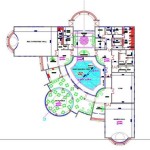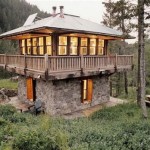Large Indoor House Plants for Low Light Conditions
Many individuals desire to cultivate a verdant and inviting indoor environment. Incorporating large houseplants is an effective strategy to achieve this aesthetic. However, limited natural light within many homes and offices poses a significant challenge to plant survival. Selecting species specifically adapted to low light conditions is paramount to their successful growth and overall health.
This article will delve into various large indoor houseplants that exhibit a remarkable tolerance for low light environments. It will explore their characteristics, care requirements, and the benefits they offer in enriching indoor spaces. Careful consideration will be given to factors such as humidity, watering, and potential toxicity, ensuring that readers are equipped with the comprehensive knowledge necessary to cultivate thriving indoor gardens, even in dimly lit settings.
Understanding Low Light Conditions for Houseplants
The term "low light" in the context of houseplants refers to areas receiving indirect or filtered sunlight for only a limited portion of the day. This typically translates to locations further away from windows, or areas with windows facing north or east, where direct sunlight is minimal. It is crucial to differentiate low light from no light; even shade-tolerant plants require some degree of illumination to photosynthesize and survive. The amount of light required varies depending on the species of plant, making careful selection a pivotal first step.
Plants that are not suited to low light conditions will exhibit specific symptoms. These may include leggy growth (elongated stems with sparse leaves), pale or yellowing foliage, stunted growth, and a failure to produce flowers. Recognizing these signs is essential for diagnosing light deficiency early and implementing corrective measures, such as relocating the plant to a brighter spot (if possible) or supplementing with artificial grow lights.
Artificial grow lights can be a valuable tool for maintaining healthy houseplants in particularly dark spaces. LED grow lights are generally preferred due to their energy efficiency and lower heat output compared to traditional incandescent or fluorescent bulbs. The specific type of grow light and its intensity will depend on the plant species and the degree of light deficiency. Positioning the light source appropriately is also crucial; typically, placing it a few inches above the plant canopy will provide optimal illumination without causing leaf burn.
Top Large Houseplant Choices for Low Light
Several species of large houseplants thrive in low light environments, adding a touch of elegance and greenery to indoor spaces. These plants possess unique adaptations that enable them to efficiently photosynthesize even with limited sunlight exposure.
Cast Iron Plant (Aspidistra elatior): This plant earns its name from its exceptional resilience and tolerance for neglect. It thrives in low light, tolerates infrequent watering, and is relatively resistant to pests and diseases. Its long, arching leaves create a lush, tropical appearance. The Cast Iron Plant's adaptability makes it an ideal choice for beginners or individuals with busy lifestyles. It prefers well-draining soil and should only be watered when the soil is dry to the touch. Overwatering can lead to root rot.
Snake Plant (Sansevieria trifasciata): Also known as Mother-in-Law's Tongue, the Snake Plant is another incredibly low-maintenance option. Its upright, sword-like leaves come in various patterns and colors, adding visual interest to any room. The Snake Plant is highly tolerant of low light, drought conditions, and neglect. It also boasts air-purifying properties, removing toxins such as formaldehyde and benzene from the indoor environment. Like the Cast Iron Plant, it's crucial to avoid overwatering. Allow the soil to dry completely between waterings.
ZZ Plant (Zamioculcas zamiifolia): The ZZ Plant is prized for its glossy, dark green leaves and exceptional hardiness. It tolerates extremely low light levels and infrequent watering, making it an excellent choice for dimly lit offices or homes. The ZZ Plant stores water in its rhizomes, allowing it to withstand drought conditions. However, it's important to note that the ZZ Plant is toxic if ingested, so it should be kept out of reach of children and pets. Water thoroughly when the soil is completely dry. Too much water can cause root rot.
Peace Lily (Spathiphyllum): Peace Lilies are known for their elegant white flowers and air-purifying capabilities. While they prefer bright, indirect light, they can tolerate low light conditions. However, in very low light, they may not produce as many flowers. Peace Lilies require consistent moisture but should not be overwatered. Allow the top inch of soil to dry out before watering again. Drooping leaves are a sign that the plant needs water. Peace Lilies also benefit from regular misting to increase humidity, particularly in dry indoor environments.
Chinese Evergreen (Aglaonema): Chinese Evergreens are available in a wide range of varieties, with foliage colors ranging from green and silver to pink and red. They are relatively easy to care for and tolerate low light conditions well. Chinese Evergreens prefer warm temperatures and high humidity. They should be watered when the top inch of soil is dry. Overwatering can lead to root rot. Wipe the leaves regularly with a damp cloth to remove dust and maintain their appearance.
Pothos (Epipremnum aureum): While technically a trailing vine, Pothos can be trained to climb or cascade from a shelf, creating a visually striking display. It's highly adaptable and tolerates low light, making it a popular choice for indoor environments. Pothos is also one of the easiest houseplants to propagate, allowing you to create more plants from cuttings. Allow the top inch of soil to dry out before watering. Pothos enjoys humidity, so consider misting it regularly.
Essential Care Tips for Low Light Houseplants
Even though these plants tolerate low light, providing them with proper care is crucial for their health and longevity. Several key factors influence their growth and overall well-being, including watering practices, humidity levels, soil composition, and fertilization.
Watering Practices: Overwatering is a common mistake that can lead to root rot, especially in low light conditions where plants transpire less water. Allow the soil to dry out partially between waterings, and always check the soil moisture level before adding more water. Use a well-draining potting mix to prevent water from accumulating around the roots. The frequency of watering will vary depending on the plant species, pot size, and environmental conditions.
Humidity Levels: Many houseplants, particularly those native to tropical regions, thrive in high humidity environments. Low humidity levels, common in many homes during the winter months, can cause leaf browning and stunted growth. Increase humidity by using a humidifier, grouping plants together, or placing the plant on a pebble tray filled with water. Misting the leaves regularly can also help to raise humidity levels, but avoid misting plants with fuzzy leaves, as this can lead to fungal problems.
Soil Composition: The right potting mix is essential for providing adequate drainage and aeration to the roots. Use a well-draining potting mix specifically formulated for houseplants. Avoid using garden soil, as it can compact and retain too much moisture. Consider adding perlite or vermiculite to improve drainage and aeration. Repot the plant every one to two years to refresh the soil and provide more space for root growth.
Fertilization: While low light houseplants do not require as much fertilizer as plants grown in bright light, occasional fertilization can help to promote healthy growth. Use a balanced liquid fertilizer diluted to half strength, and apply it during the growing season (spring and summer). Avoid fertilizing during the dormant season (fall and winter). Over-fertilizing can lead to salt buildup in the soil, which can damage the roots.
Pest and Disease Control: Even in low light conditions, houseplants can be susceptible to pests and diseases. Regularly inspect your plants for signs of infestation, such as aphids, spider mites, or mealybugs. Treat infestations promptly with insecticidal soap or neem oil. Ensure good air circulation around the plants to prevent fungal diseases. Remove any dead or yellowing leaves to prevent the spread of disease. Isolate any infected plants to prevent the infestation from spreading to other plants.

The Best Large Indoor Plants For Low Light 136 Home

6 Indoor Trees That Thrive In Low Light Won T

The Best Large Indoor Plants For Low Light 136 Home

6 Indoor Trees That Thrive In Low Light Won T

29 Best Low Light Indoor Plants 2024 That Don T Need

15 Easy Care Houseplants For Beginners 2024

16 House Plants That Crave Dark Corners Indoor Don T Need Sun Gatheraus

Low Light Tall Indoor Plants Live Greenery Adds A Touch Of Warmness And Beauty To An Room House

18 Large Low Light Houseplants To Bring Your Home Life Smart Garden Guide

10 Tall Indoor Low Light Plants House








